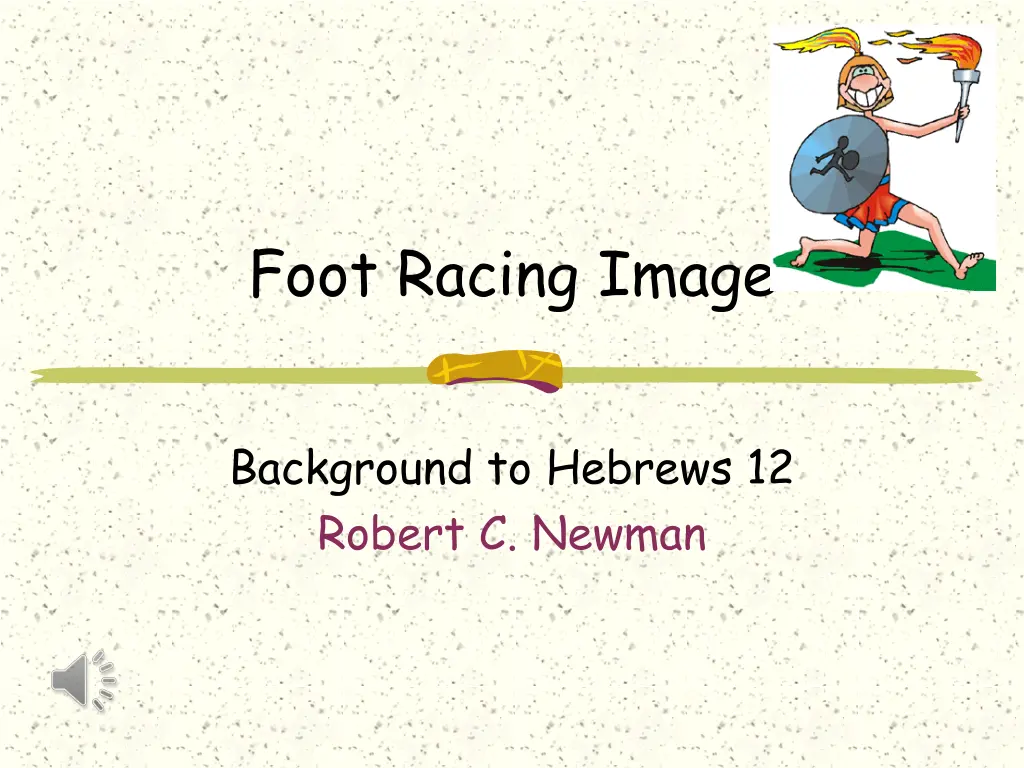
Ancient Foot Racing History and Olympic Games Overview
Discover the origins of foot racing dating back to ancient times, its ties to warfare, and the evolution of athletic competitions in Ancient Greece, including the prestigious Olympic Games and other major events such as the Pythian, Isthmian, and Nemean Games. Explore how these ancient athletic meets have shaped modern sports culture.
Download Presentation

Please find below an Image/Link to download the presentation.
The content on the website is provided AS IS for your information and personal use only. It may not be sold, licensed, or shared on other websites without obtaining consent from the author. If you encounter any issues during the download, it is possible that the publisher has removed the file from their server.
You are allowed to download the files provided on this website for personal or commercial use, subject to the condition that they are used lawfully. All files are the property of their respective owners.
The content on the website is provided AS IS for your information and personal use only. It may not be sold, licensed, or shared on other websites without obtaining consent from the author.
E N D
Presentation Transcript
Foot Racing Image Background to Hebrews 12 Robert C. Newman
History of Foot Racing Origin lost in antiquity Probably began (like most other ancient sports) as practice for warfare
Ancient Athletics Greece is our main source of information on the ancient period. After Alexander the Great, Greek culture spread through most of the Mediterranean world. This culture was continued (with some additions) by the Romans.
Ancient Athletic Meets In ancient Greece, there were four main competitive meets, held for centuries every two or four years. These were: Olympic Games Pythian Games Isthmian Games Nemean Games
Olympic Games Every four years, in August of the 1st year of the Olympiad At Olympia in the W Peloponnesus In honor of Zeus Prize an olive wreath
Olympic Games Originally only men were competitors; later boys & adolescents. Events: Various Footraces Discus Javelin Broad jump Boxing Wrestling Pankration Pentathlon
Pythian Games Every four years, in August of the 3rd Olympiad year At Delphi, 80 mi NW of Athens In honor of Apollo Prize a laurel wreath. Events similar to Olympics, plus musical competition
Isthmian Games Every two years, in Apr/May of 2nd& 4th Olympiad years At Corinth In honor of Poiseidon Prize was dry celery wreath, later pine Not as prestigious as Olympics
Nemean Games Every two years, in July of 2nd& 4th Olympiad years At Nemea, 15 mi SW of Corinth In honor of Zeus Prize a wreath of fresh wild celery
Other Games By New Testament times, every major city in the Roman empire had games annually or at longer periods, with much less prestige than these four. Prizes were more valuable, but less prestigious. Athletics by this time had become dominated by professionals.
Ancient Footracing Little information about non- Greek footracing
Various Footraces Stadion or dromos The standard-length race, one length of the stadium, about 200 yards Diaulous One turn at end of stadium, ~400 yds Dolichos Various longer races, up to 3 miles (24 stades) Hoplite Racing in full or partial armor, 2-15 stades
Stadium Long, narrow (200 x 30 yd) with stands all around Up to 20 runners ran side-by-side Turned at one or more posts at end, rather than having an oval track. Delphi Stadium
Sources Encyclopaedia Britannica (1970) E. N. Gardiner, Athletics of the Ancient World (1930) Athletics in Antiquity, The Ancient World (March 1983) Ancient Games & Athletics, The Ancient World (August 1984) www.perseus.tufts.edu/Olympics
The End Run so as to obtain the prize!
